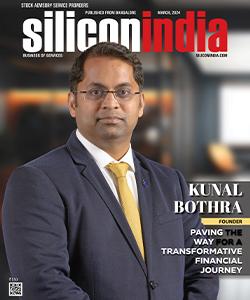Banks preoccupied with working interest, deposit rates in 2010
By
siliconindia | Tuesday, December 28, 2010
New Delhi: RBI's tight monetary policy brought about constant movement in the lending and deposit rates by banks during the year, a trend that is likely to continue in 2011 due to worrying inflation.
While the loans seekers may have to pay higher EMIs (Equal Monthly Instalments) the depositors can hope for better returns on their savings in the coming year.
The interest rates on home, auto and corporate loans have gone up by about 2 percent during the course of the year.
The increase in lending rate was matched by a similar increase in interest rate on fixed deposit.
While interest rate on auto and home loans ranges between 8 to 11 percent, the depositors can earn up to 8-9 percent.
The hike in retail interest rate during the year was triggered by tightening of the monetary policy by the Reserve Bank of India.
The central bank for the sixth time during the year raised its key short-term lending and borrowing rates known as repo and reverse repo rates to tame inflation.
Close to 10 per cent inflation in February this year prompted Reserve Bank to reverse easy monetary policy by raising Cash Reserve Ratio, the percentage of deposits that banks have to keep with the central bank, by 50 basis points to 5.50 percent.
RBI started tightening key policy rates from February. As part of the calibrated exit, RBI increased its repo rate by 150 basis points, reverse repo by 200 basis points and Cash Reserve Ratio by 100 basis points during February-November 2010.
However, banks continued to hold on their rates for almost 6 months despite RBI raising key policy rates and reserve ratio in quick succession to tame inflationary expectations.
But interest rates started hardening soon after the first quarterly review of the monetary policy in July in which RBI raised short-term lending rate (repo) to 5.75 percent and short-term borrowing rate (reverse repo) to 4.50. Thus, repo went up by 0.25 percent and reverse repo by 0.50 percent respectively.
Soon after the policy action, HDFC Bank announced increase in interest rates which was followed by others.
In August, many major lenders including State Bank of India, Punjab National Bank, Bank of Baroda, Bank of India, Oriental Bank of Commerce and Canara Bank raised interest rates.
Upward movement in the interest rates still continues as many banks including SBI have further raised deposit and lending rates during December as well.
According to analysts, interest rates would harden further in the coming year as there seems to be mismatch between credit and deposit growth.
Source: PTI

